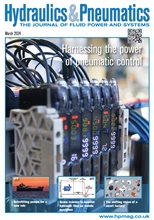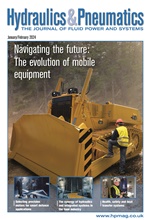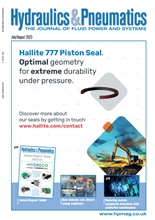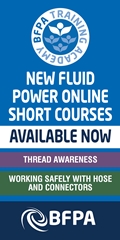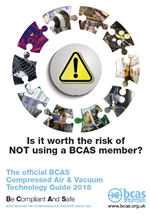- Home » Editorial » Hydraulics
Recovering high value products helps food factories maximise returns
No matter how good your equipment is at preventing product build-up, there will come a time when cleaning, usually in the form of cleaning-in-place or CIP, needs to be carried out. Depending on the range of products handled and product complexity, this may be required several times a day between production batches. If product remaining in equipment is ‘flushed’ through as part of cleaning procedures then, as shown above, hundreds of thousands of pounds of product could be lost each year.
Traditionally, the problem has been overcome by the use of ‘pigging systems’ to physically push product through key parts of the system or to use water or air to push product through, although all have certain disadvantages, including added complexity and the potential to dilute or contaminate products.
Enhanced product flow
Another option is to use a heat exchanger which is capable of emptying itself of produce before the cleaning cycle commences. This is possible using the HRS R Series of heat exchangers. This range of tube-in-tube heat exchangers uses a scraper bar within each inner tube to enhance product flow, prevent fouling and minimise pressure drop. The unique feature of the R Series is that the scraper bar features a helical screw which rotates at high speed. When configured correctly, this screw can be run in reverse, effectively emptying the heat exchanger tubes of product without damaging it or changing its characteristics.
The system is particularly suitable for high value viscous products such as honey, treacle, custards and creams, where any loses of product can be economically important. The R Series can be emptied of the majority of product without the need for any additional pumps or pressure systems. This provides advantages in terms of both capital- and running-costs.
The R-Series can be configured for both horizontal and vertical operation, so that gravity can also be used to help recover product from the tubes. Each unit can be supplied with one, three or six tubes and multiple units can be combined for larger installations. Due to the amount of product saved, and the fact that it is often unnecessary to install additional product recovery systems, the R Series heat exchanger can quickly pay for itself, and in the long term can be a more economic option than alternative systems which have lower capital costs.
1 Preparatory Study on Food Waste across EU 27. Technical Report – 2010 – 054. http://ec.europa.eu/environment/eussd/pdf/bio_foodwaste_report.pdf
2 Reducing Food Loss and Waste. World Resources Institute Working Paper. http://www.unep.org/pdf/WRI-UNEP_Reducing_Food_Loss_and_Waste.pdf
3 http://www.fooddrinkeurope.eu/our-actions/foodwaste-toolkit/avoid-food-loss-during-processing/
-
Smart Manufacturing & Engineering Week
05 - 06 June, 2024
NEC, Birmingham -
HILLHEAD 2024
25 June, 2024, 9:00 - 27 June, 2024, 16:00
Hillhead Quarry, Buxton, Derbyshire UK



